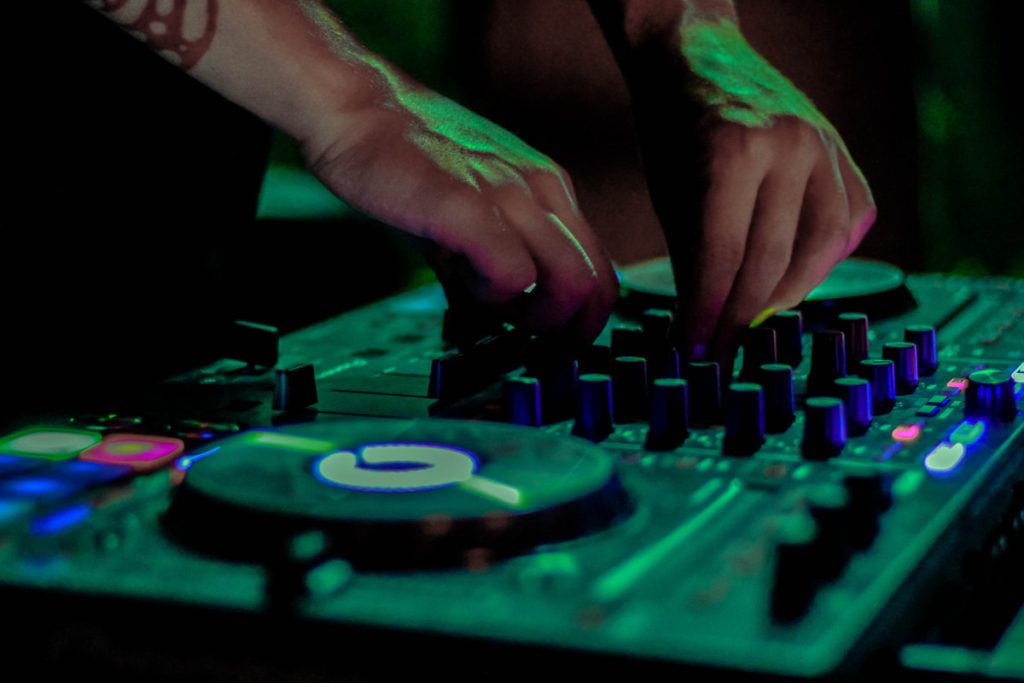Table of Contents
ToggleYou’ve locked in the dress, the venue, the menu, and maybe even the perfect golden-hour photographer. But no one tells you what it’s like to stand in a half-empty reception room at 9pm, watching guests sneak out early while the DJ plays to a thinning crowd. It’s not a disaster — just not the night you imagined. And it’s a lot more common than people realise.
Weddings can be stunningly well planned on paper but still fall flat in real time. The problem usually isn’t the music or the speeches or the food. It’s the pacing. When the flow of the night doesn’t match the energy in the room, even the best party can lose its spark too early.
What Makes a Reception Run Out of Steam
You can usually spot it in the lull after the mains are cleared. The speeches ran long, the lights are too bright, and the playlist feels more like background noise than a cue to get moving. People start checking their phones, ducking outside for air, or heading home before the dancing even begins.
It’s rarely one thing that kills the mood. More often, it’s a slow drift caused by awkward transitions or poorly timed formalities. Maybe the cake was cut too early, or the first dance followed directly after the entrée without a breather.
Some couples feel pressure to cram in every tradition, while others unintentionally stretch the night with too many gaps. Either way, guests start to disengage — not because they’re bored, but because there’s nothing anchoring them to the moment.
Even the room layout can work against you. A dance floor that feels disconnected from the action, or a DJ tucked into a corner behind the bar, can create a divide that no beat drop can fix.
Why the Energy Curve Matters More Than the Playlist
It’s easy to assume that great music is enough to carry the night. But even with a solid soundtrack, if the room’s not ready to respond, it won’t land. What makes a reception feel alive is less about what’s playing and more about when and how it hits.
Weddings that stay vibrant from start to finish usually follow a kind of rhythm that mirrors how people naturally interact.
Think of it like an energy curve — moments to sit and listen, moments to mingle, then the right spark at just the right time to shift into celebration mode. It’s not about forcing the dance floor open at 7:30pm sharp. It’s about creating space for the vibe to build so that when the music does turn up, it feels earned — not awkward.
Good pacing often goes unnoticed, which is exactly the point. Guests aren’t thinking about schedules or run sheets. They’re just enjoying themselves, moving from dinner to dancing without the sense of being herded. A DJ who knows how to bridge moments can help keep that natural flow. The real skill is being able to keep up the energy even when there’s a lull in socialising.
When that flow works, the dance floor tends to get busy quickly!
Enter Professional entertainment
There’s a moment in every wedding where energy dips. It’s not a failure — it’s just human. People get tired, distracted, or unsure of what’s meant to happen next.
The best interactive elements blend into the night without hijacking it. A few well-timed shoutouts, a music cue that gets an inside joke going, or a cheeky challenge between tables can be enough to pull people back in.
A confident wedding celebrant like our friends from Melbourne Cityside Celebrant who can read the room without over-talking helps here too. It gives guests something to respond to. And once a few people are up, the rest usually follow.
It’s not about manufacturing hype. It’s about reading the room and giving it a nudge in the right direction.
Timing is Everything (and So is Trusting the Right People)
You can write the perfect run sheet, colour-code the timeline, and have every cue nailed — and still watch the night stall if no one’s steering in real time. That’s the part couples often overlook. Wedding flow isn’t just planned; it’s managed as it happens. And the people guiding that rhythm make all the difference.
This is where experience shows, with the grisly vet DJs being able to the room, adjusting to pockets of energy, holding a moment when it needs space or flipping gears when the vibe starts to dip.
In Melbourne, where weddings can range from urban rooftops to rustic wineries, knowing the venue matters too. Pros who’ve worked across these spaces know which rooms need earlier momentum and which ones hold energy later.. That kind of subtle call can’t be made by a playlist or a generic plan — it comes from reading people, not just timelines.
When the Dance Floor Tells the Real Story
There’s a certain hum that hits when a wedding’s going well. You’ll hear it in overlapping conversations, see it in the way people linger at their tables but keep glancing toward the dance floor. And then it happens — one track pulls a group up, someone’s aunt surprises everyone with a move straight from the ‘80s, and suddenly the room tips from dinner to party without anyone announcing it.
This is the part of the night that can’t be forced, but it also doesn’t happen by accident. When everything leading up to it has been handled with care — the flow, the transitions, the tone — the dance floor becomes the natural next step, not an obligation. People stay later, drink less, talk more. And not because they were entertained, but because they were part of something that felt easy and well-paced.
That feeling matters more than any decor choice or custom menu. It’s what guests remember weeks later, when they talk about how fun it was or how they didn’t even notice the time. Getting there takes more than good music. It takes timing, flexibility, and the right energy in the right moments.
And once it clicks, you won’t need to ask anyone to dance. They’ll already be there.
There’s a moment in every wedding where energy dips. It’s not a failure — it’s just human. People get tired, distracted, or unsure of what’s meant to happen next. This isn’t about pulling people into awkward games or spotlighting reluctant guests. It’s more about building small moments of connection that reset the room.
You’ll see everything from acoustic duos weaving between tables to DJs who take live requests via text. Some couples bring in percussionists or sax players to play alongside a DJ — not to steal focus, but to stir energy where it’s needed.
The best interactive elements blend into the night without hijacking it. A few well-timed shoutouts, a music cue that gets an inside joke going, or a cheeky challenge between tables can be enough to pull people back in. It gives guests something to respond to. And once a few people are up, the rest usually follow.
It’s not about manufacturing hype. It’s about reading the room and giving it a nudge in the right direction.
Timing is Everything (and So is Trusting the Right People)
You can write the perfect run sheet, colour-code the timeline, and have every cue nailed — and still watch the night stall if no one’s steering in real time. That’s the part couples often overlook. Wedding flow isn’t just planned; it’s managed as it happens. And the people guiding that rhythm make all the difference.
This is where experience shows. A seasoned DJ isn’t just playing songs or reading from a script. They’re watching the room, adjusting to pockets of energy, holding a moment when it needs space or flipping gears when the vibe starts to dip. They’re not just ticking off events — they’re shaping how the whole night feels.
Melbourne weddings can range from urban rooftops to rustic wineries, knowing the venue matters too. Local DJs who’ve worked across these spaces know which rooms need earlier momentum and which ones hold energy later. They know when to stretch out the canapés and when to bring in the dance floor filler. That kind of subtle call can’t be made by a playlist or a generic plan — it comes from reading people, not just timelines.
When you trust professionals to lead the night with feel instead of rigid timing, you leave space for the unexpected moments. And that’s usually where the best memories come from.
When the Dance Floor Tells the Real Story
There’s a certain hum that hits when a wedding’s going well. You’ll hear it in overlapping conversations, see it in the way people linger at their tables but keep glancing toward the dance floor. And then it happens — one track pulls a group up, someone’s aunt surprises everyone with a move straight from the ‘80s, and suddenly the room tips from dinner to party without anyone announcing it.
This is the part of the night that can’t be forced, but it also doesn’t happen by accident. When everything leading up to it has been handled with care — the flow, the transitions, the tone — the dance floor becomes the natural next step, not an obligation. People stay later, drink less, talk more. And not because they were entertained, but because they were part of something that felt easy and well-paced.
That feeling matters more than any decor choice or custom menu. It’s what guests remember weeks later, when they talk about how fun it was or how they didn’t even notice the time. Getting there takes more than good music. It takes timing, flexibility, and the right energy in the right moments.
And once it clicks, you won’t need to ask anyone to dance. They’ll already be there.



